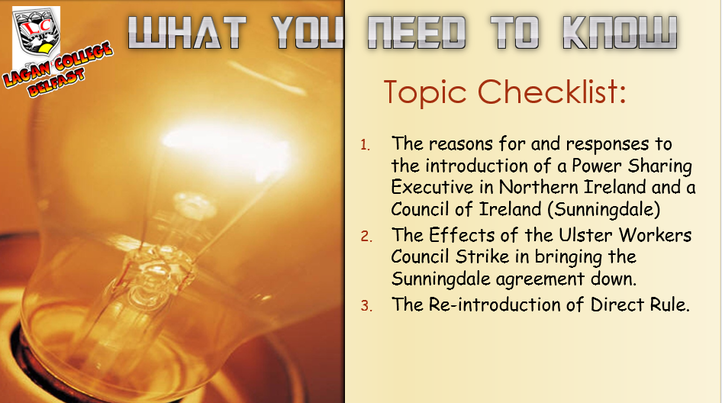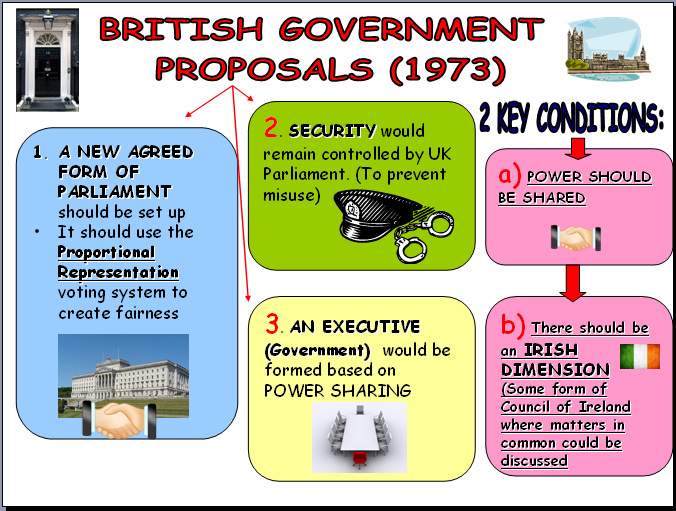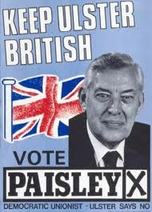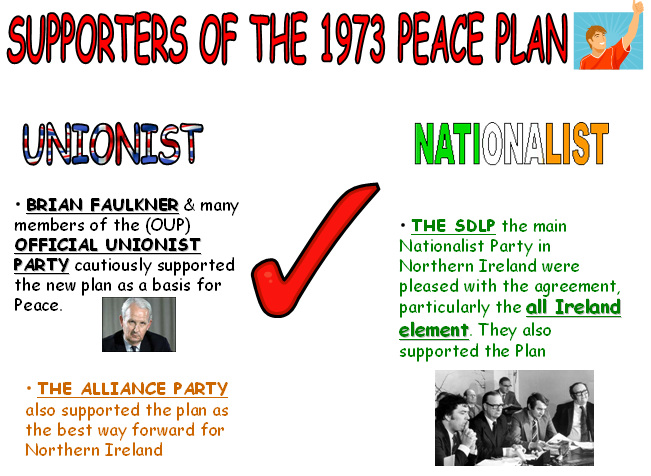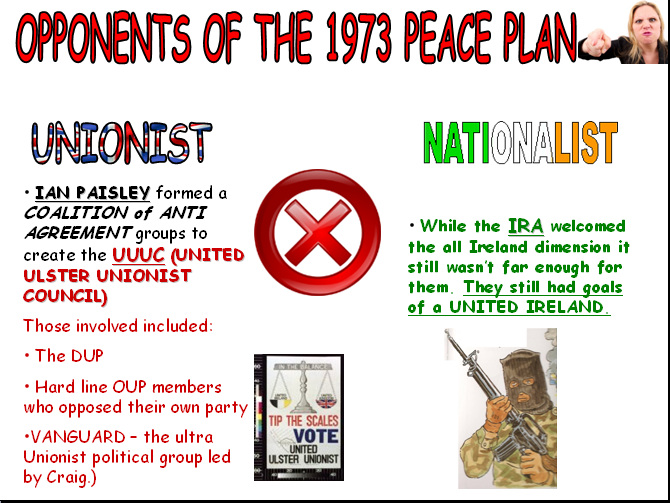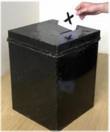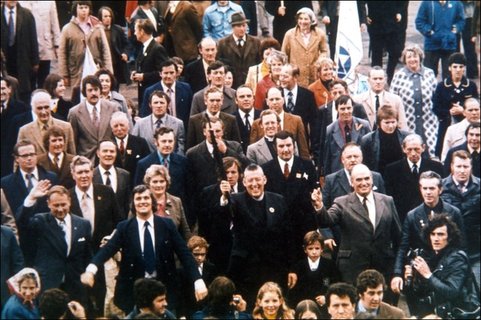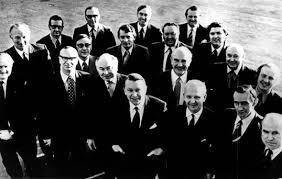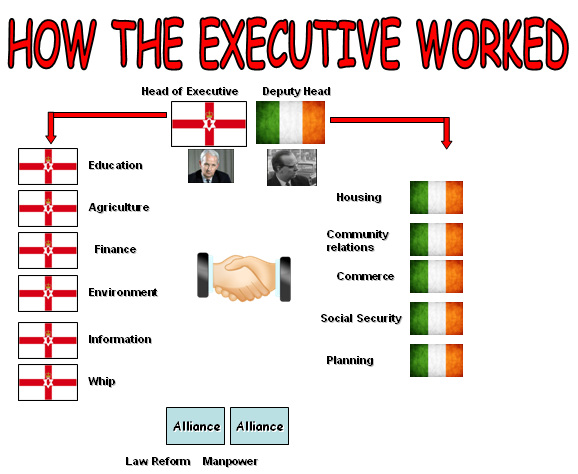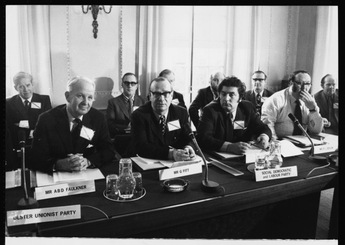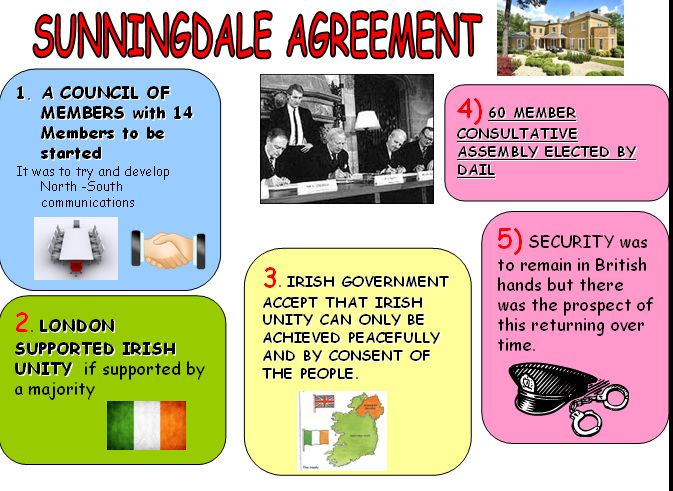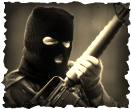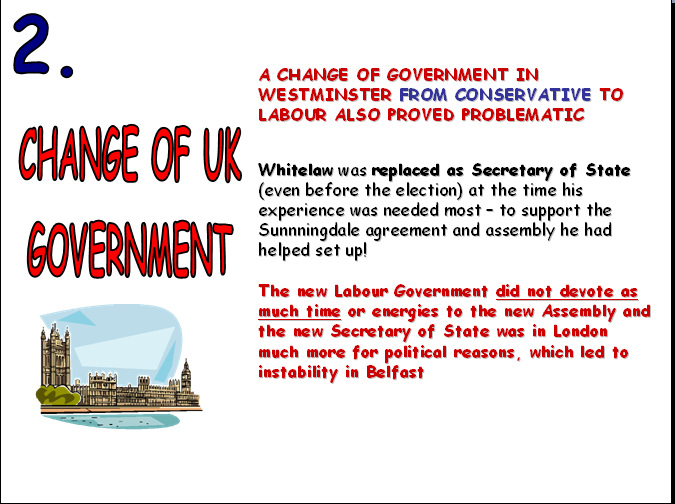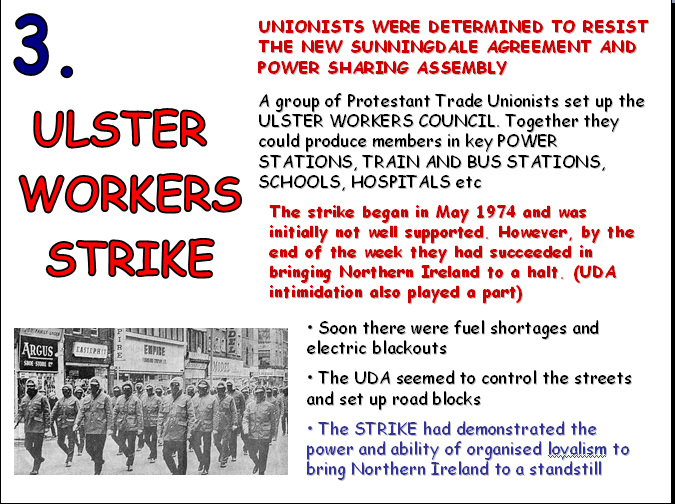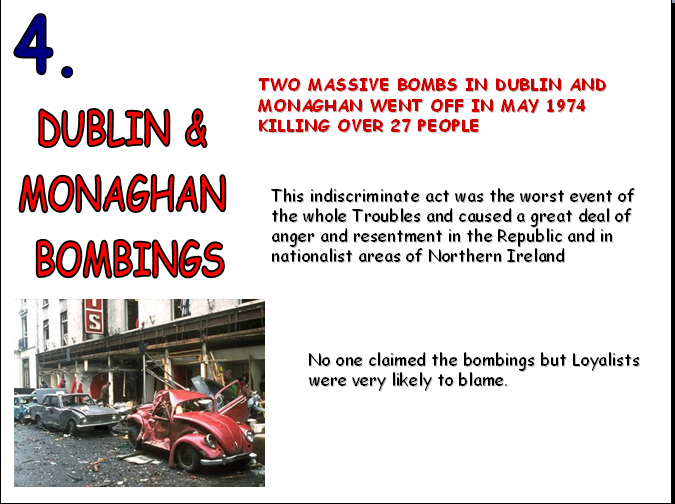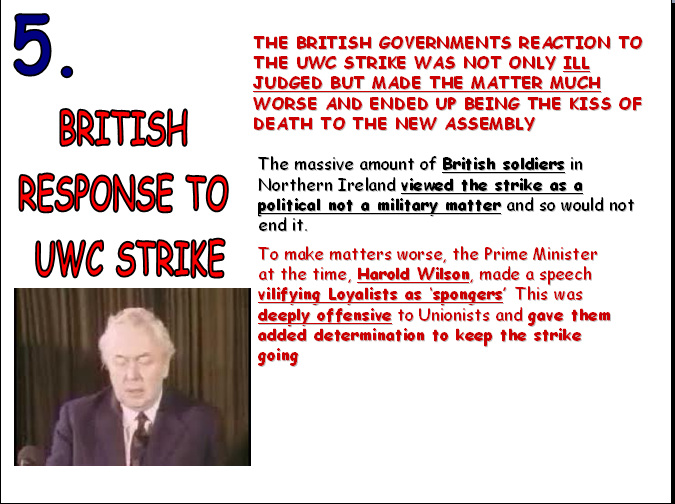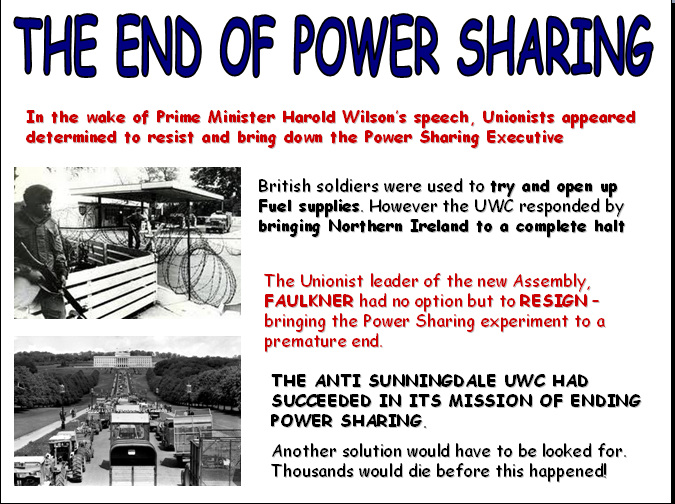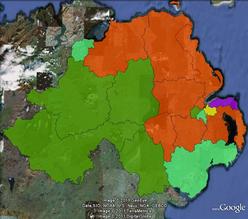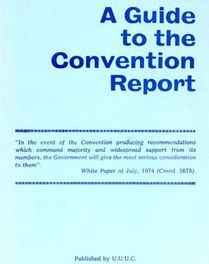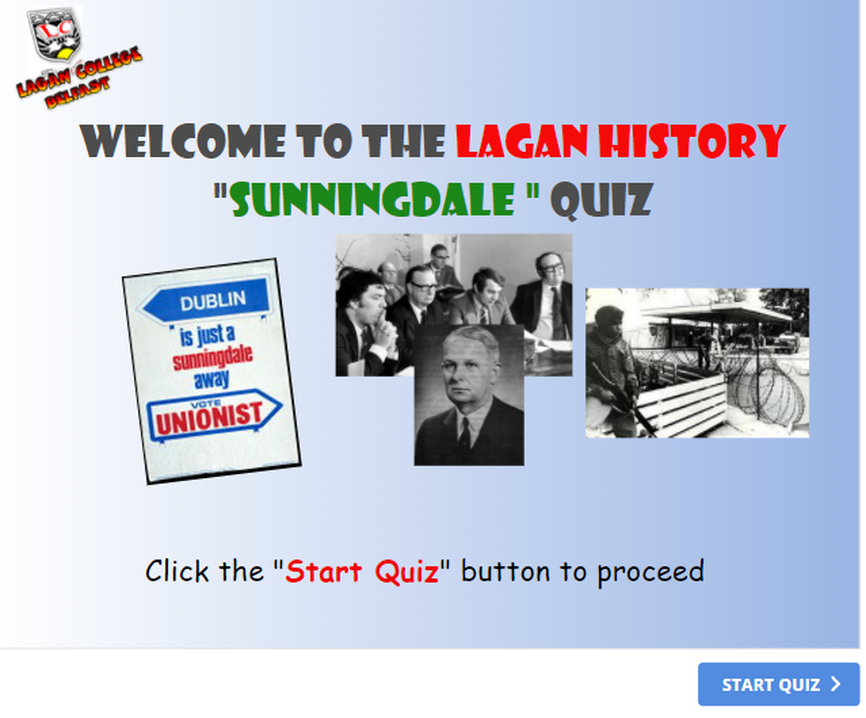INTRODUCTION TO THIS SECTION
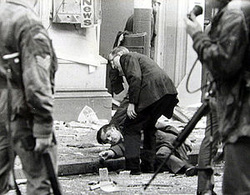
To recap:
- By 1973 the Troubles had been ongoing for over 3 years.
- Already many hundreds of people had been killed and thousands wounded.
- 1972 had proved the bloodiest year so far with nearly 500 people killed in bombs and shootings.
- Terrible atrocities had taken place on both sides with Bloody Sunday and Bloody Friday among the most horrific.
- In response, the British Government had shut down Stormont and imposed Direct Rule from London
- The British Army had also ended No Go areas across Northern Ireland in Operation Motorman. This was aimed at bringing a sense of normality to Northern Ireland
- NOW THE AIM WAS TO FIND A PERMANENT POLITICAL SOLUTION. THIS SECTION FOLLOWS THE QUEST FOR THAT SOLUTION FROM 1973-1974.
The British Government knew it had to seize the initiative and try and find a political solution before the Troubles became any deeper and the prospect of Civil War loomed. It worked on a set of proposals (A White Paper) to start some form of settlement.
|
With emotions in Northern Ireland high after 3 years of conflict, the prospects for peace were dim.
There was some progress towards establishing a dialogue between moderate nationalists and unionists but tension and mistrust still remained. What made matters worse was that both Unionism and nationalism had a strong level of critics on both sides. These critics could bring down any new agreement before it had even started. |
THE FIRST TEST OF SUPPORT:
ASSEMBLY ELECTIONS 1973
|
The first real test of support was the Assembly Elections of June 1973.
|
PROGRESS OF A SORT:
A NEW GOVERNMENT FOR NORTHERN IRELAND
Despite the Unionist division and opposition, the PRO AGREEMENT Parties all decided to move ahead and form the new Power Sharing Government of Northern Ireland.
|
HOW DID THIS WORK?
|
The last elements needed to make this Government work would be to work out EXACTLY WHAT ROLE the REPUBLIC OF IRELAND was to play in Northern Ireland through the COUNCIL OF IRELAND.
The British Government had conveniently not specified what the COUNCIL OF IRELAND was and what powers Dublin would therefore have. This was pragmatic - to hammer through an agreement. However, this had to be made clear.
The British Government had conveniently not specified what the COUNCIL OF IRELAND was and what powers Dublin would therefore have. This was pragmatic - to hammer through an agreement. However, this had to be made clear.
- Nationalists wanted a prominent role for Dublin while ...
- Unionists were highly fearful of any moves seen as a step towards a United Ireland
|
To try and settle these outstanding issues a conference was called in a stately home in England called Sunningdale.
Attending the conference were:
THE UNDERLYING PROBLEM WITH THIS HOWEVER IS THAT THE AGREEMENT BEING MADE DOES NOT HAVE THE SUPPORT OF THE MAJORITY OF UNIONISTS- THIS IS A MAJOR WEAKNESS |
YOUTUBE CLIP COVERING THE SUNNINGDALE AGREEMENT
Sunningdale looked to many like the solution to the problems. However, it was crippled by a number of problems from the beginning.
|
The leader of the Official Unionist Party, BRIAN FAULKNER, was in trouble from the very beginning with Sunningdale.
|
|
Meanwhile for the Nationalist SDLP, there were also problems.
For them, the COUNCIL OF IRELAND did not go far enough. They wanted to show their supporters that they had achieved a working, permanent and effective link with the Republic of Ireland Government. In fact, it soon became clear that the Council of Ireland's powers were limited to that of an advisory body. |
|
For the IRA they had already achieved one of their goals - the destruction of Stormont.
They were keen to achieve more goals including the supreme goal for them - a United Ireland. The Sunningdale Agreement therefore did not go far enough for them THE VIOLENT IRA RESPONSE WAS A CAMPAIGN OF CHRISTMAS BOMBING IN LONDON |
As you can see, even from the very start the agreed Political solution of establishing a Power Sharing Executive in Northern Ireland (with some links to the Republic) had deep weaknesses from the start.
HIGH HOPES
However, in 1973 there were real hopes it could work.
DIFFICULT REALITY
HIGH HOPES
However, in 1973 there were real hopes it could work.
- The moderate Unionists of the OUP seemed to be supportive.
- The moderate nationalists of the SDLP had also given its support providing a cross community focus.
- However things immediately began to unravel:
DIFFICULT REALITY
- Faulkner faced a deep split in his Party (OUP) over Sunningdale - especially the Council of Ireland's links with the Republic of Ireland. In January 1974 those divisions began to emerge. Sunningdale was officially rejected by the ruling council of the Official Unionist Party.
- As a response to this Faulkner immediately resigned but bringing with him the support of 19 moderate Assembly members
- He still remained as head of the New Executive with these Assembly members but the split had mortally wounded his support.
While the hard line Unionists of the UWC and UUUC may have won in their ambition to force an end to Power sharing, it was a hollow victory. There was simply a return to Direct rule - which didn't please either side!.
The search also went on for a solution that would be accepted by all sides. This process was frustratingly long and complicated, with hardened attitudes on both sides, unwilling to countenance any meaningful change.
In the mean time the appalling violence continued killing hundreds.
The search also went on for a solution that would be accepted by all sides. This process was frustratingly long and complicated, with hardened attitudes on both sides, unwilling to countenance any meaningful change.
In the mean time the appalling violence continued killing hundreds.
what other ideas did they try?
|
The British Government began to realise that they did not really understand Northern Ireland and its maze of political problems.
They began to think that the best way to solve the problem was not to supply a solution but to have the main players in Northern Ireland come up with the solutions themselves. constitutional convention 1975This aimed to provide solutions from the local parties. The British hoped in this way some common ground may be reached.
THE CONVENTION HAD LITTLE IMPACT:
|
|
|
|
|
|
|
|
|
|
© J Wishart / Rita Morgan 2019
